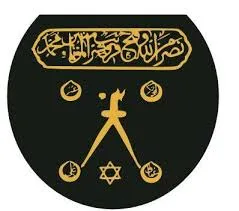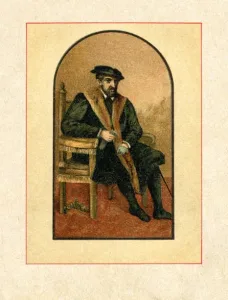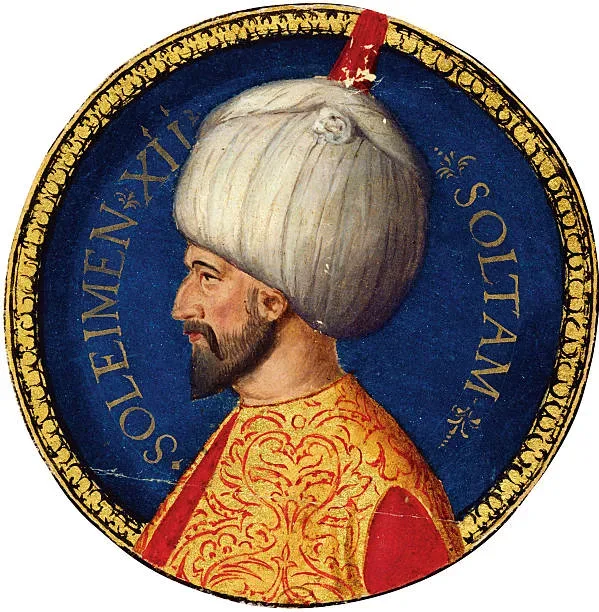
Table of Contents
Introduction
how ottoman developed in Art, Architecture, Literature, Culture heritage?
The magnificent century is the time of the ottoman empire more dominant half This is the time of Suleiman khan Sublime is viewed as the pinnacle of force and thriving of the Ottoman Domains on the Bosphorus.
During his rule, the Ottoman state turned into the main politically influential nation that included the vast majority of the Center East, North Africa, and Southeast Europe inside its nation.
The Perspective on the Suleimani Mosque in Suleimani neighborhood of Fatih in Istanbul, with a dull overcast foundation. Photograph through Getty image(jpg)
it was a battled-on August 29, 1526, close to Mohacs in Hungary.
The powers of Ruler Louis II of Hungary and Bohemia were crushed by the Ottoman armed force drove by King Suleyman the Eminent.
The Ottoman triumph denoted the finish of the Jagiello line in Hungary which was apportioned for a considerable length of time between the Ottoman Realm, the Habsburg Government, and the Territory of Transylvania.
The Skirmish of Mohacs was a definitive fight battled between the powers of the Realm of Hungary and its partners, drove by Louis II, and those of the Ottoman Domain, drove by Suleiman the Wonderful.
The fight finished in an Ottoman triumph, which denoted the compelling obliteration of the Hungarian government and made ready for Habsburg and Turkish control in Hungary.
The demise of Louis II as he escaped the fight denoted the finish of the Jagiellonian tradition in Hungary and Bohemia, whose dynastic cases passed to the Place of Habsburg
. During the fight, the Ottomans used the gun bowing position, the first of its sort, with 200 Tufan’s (black powder rifles) framing “nine back-to-back lines and they shot their weapons column by line” in a “stooping or standing situation without the requirement for extra help or rest”.
This technique was subsequently embraced by the Chinese, with essayist Zhao Shenzhen considering Turkish rifles better than European ones. Volley fire with matchlocks was likewise first utilized in this fight by Janissaries.
who was Barbarossa and the swords of Mediterranean Sea?

the banner of Barbarossa through (picture from via googles image).
The extraordinary seasons of the Mediterranean Ocean controlled under the blades Hayreddin Barbarossa, the most dreaded privateer of the Mediterranean in the sixteenth hundred years.
Barbarossa was a more gifted fighter and a political pioneer who established a prosperous realm, aligned with the Islamic domain of the Ottoman Turks, and effectively resisted one of Christian Europe’s most impressive rulers, the Spanish head Charles V.
He was brought into the world on the Greek island of Lesbos, the child of a Christian rebel who had enlisted in the Ottoman armed force.
why the spain king Charles V & ottoman empire confilict?
The region map that agreed by Hayre racket of Barbarossa hyredin pasha of an incredible naval commander of ottoman realman.The contention between Lord Charles V of Spain and the Ottoman chief of naval operations Hayreddin Barbarossa pasha.
The two gatherings were engaged with a few fights, remembering the Attack of Algiers for 1541, where Charles V laid attack to Algiers to end the corsair danger to the Spanish spaces.
Nonetheless, Barbarossa had the option to repulse the assault and keep up with his situation as the leader of Spain’s domains in North Africa.
Barbarossa was a talented hero and naval commander of the Ottoman Naval force, who got Ottoman strength over the Mediterranean during the mid-sixteenth hundred years.
He was brought into the world on Lesbos and started his maritime vocation as a corsair under his senior sibling Oruç Reis. In 1516, the siblings caught Algiers from Spain, with Oruç pronouncing himself King.
Following Oruç’s passing in 1518, Khizr acquired his sibling’s moniker, “Barbarossa” (Redbeard in Italian).
He likewise got the privileged name Hayreddin (from Arabic Khayr promotion Clamor, “decency of the confidence” or “best of the confidence”).
In 1533, Barbarossa was designated Kapu dan Pasha (amazing chief naval officer) of the Ottoman Naval force by the of ruler Suleiman khan the Superb.
He drove a consulate to France around the same time, vanquished Tunis in 1534, accomplished an unequivocal triumph over the Sacred Association at Preveza in 1538, and directed joint missions with the French during the 1540s.
Barbarossa and his sibling Oruçh Reise directed an armada of around twelve boats, which they used to send off trying assaults on Spanish fortresses in North Africa.
Barbarossa’s assaults on Christian boats, particularly Spanish ones, brought him immense measures of plunder and drawn in the consideration of the emir of Algiers, with whom they united.
Barbarossa crushed the joined power of 300 cruising ships with just 122 galleys, opening Tripoli and the eastern Mediterranean to Ottoman rule.
Barbarossa likewise drove extra military missions, remembering one for which he helped the French against the Habsburgs in 1543 and 1544.Barbarossa resigned to Constantinople in 1545 and kicked the bucket the next year.
Barbarossa passed on in Istanbul (Constantinople) in 1546.The king Charlis V, Spanish government, Roma Domain and Chief naval officer Anderia Doria
The incredible of Europe government under Charles V, the Heavenly Roman Head and Ruler of Spain. Charles V was brought into the world on February 24, 1500, in Flanders, which is presently important for Belgium.
He was the Blessed Roman Sovereign from 1519 to 1556, Ruler of Spain from 1516 to 1556, and Master of the Netherlands as nominal Duke of Burgundy from 1506 to 1555.

Steel etching of Charles V (24 February 1500 – 21 September 1558) was Blessed Roman Sovereign (1519-1556), Ruler of Castile and Aragon (1516 – 1556), and top of the Place of Habsburg.
As head he was sovereign in Germany and northern Italy, while he had direct rule over Habsburg Austria and furthermore the Habsburg Netherlands since becoming Duke of Burgundy in 1506.
Charles V acquired a Spanish and Habsburg realm stretching out across Europe from Spain and the Netherlands to Austria and the Realm of Naples and coming to abroad to Spanish America.
He battled to keep his realm intact against the developing powers of Protestantism, expanding Ottoman and French tension, and even antagonism from the pope.
Finally, he yielded, surrendering his cases to the Netherlands and Spain for his child Philip II and the title of ruler to his sibling Ferdinand I and resigning to a religious community.
Charles V was a benefactor of human expression and sciences, and he upheld crafted by numerous specialists, including Titian and Peter Bruegel the Senior. He kicked the bucket on September 21, 1558, in San Jerónimo de Yuste, Spain, at 58 years old.
He was the Blessed Roman Sovereign from 1519 to 1556, Ruler of Spain from 1516 to 1556, and Master of the Netherlands as nominal Duke of Burgundy from 1506 to 1555.
Andrea doria the Chief of naval Repuplic of genoa he’s europe power?
Andrea Doria was a Genoese legislator, condottiere (soldier of fortune leader), and chief of naval operations who assumed a critical part in the Republic of Genoa during his lifetime.
He was brought into the world on November 30, 1466, in One glia, Duchy of Milan, Italy, and kicked the bucket on November 25, 1560, in Genoa, Italy, at the age of 93 1. Doria was an individual from an old blue-blooded Genoese family and was stranded at an early age.
He turned into a trooper of fortune and served Pope Honest VIII when Genoa had succumbed to the squabbles of opponent families.
Doria was a very capable trooper and was progressively employed by Ruler Ferdinand I and his child Alfonso II of Naples and by different Italian sovereigns.
From 1503 to 1506, he assisted his uncle Domenico with suppressing the Corsican rebel against Genean rule.
Andrea Doria was a Genoese chief naval officer who battled against the Barbarossa corsairs (privateers) all through on the Mediterranean Ocean. In the mid 1520s, he was utilized and designated commander general by the French ruler, Francis I, to battle Sovereign Charles.
Afterward, Doria served Charles V and went with him on the Algiers campaign of 1541. Overcomers of Naval commander Andrea Doria gathering his military on a boat’s (Photograph through Getty Pictures)
Doria equipped eight galleys and watched the Mediterranean, battling the Ottoman Turks and the Barbary privateers, expanding the two his standing and his fortune. He scored a splendid triumph over the Turks at Pianosa in 1519.
After the Blessed Roman ruler Charles V’s powers had taken Genoa (1522) and removed the supportive of French group there, Doria entered the assistance of Francis I of France, who was battling Charles V in Italy.
As naval commander of the French Mediterranean armada, Doria constrained the sovereign’s military to raise the attack of Marseille in 1524.
After the French loss at Pavia (1525), at which Francis was taken prisoner by supreme powers, Doria served Pope Merciful VII.
At the point when Francis was liberated (1527), Doria rejoined the French powers, which assisted him with catching Genoa from the royal powers.
Be that as it may, Doria before long became baffled both with French approaches towards Genoa and with Francis’ aims towards himself, thus he moved his administrations to Charles V.
In September 1528, Doria and his powers drove the French out of Genoa and were victoriously gotten by the city. Charles V gave wealth and respects to him, naming him fabulous chief of naval operations of the majestic armada and sovereign of Melfi.
As the new leader of Genoa, Doria disposed of the groups that had tormented the city and comprised another oligarchic type of government made out of the city’s primary noble families. His improved constitution for Genoa would go on until he was dead
he was longest-ruling ruler of the Ottoman Realm
sultan suleiman khan the Heavenly: A Point by point Rundown Suleiman the Magnificent (1494-1566), otherwise called Suleiman I or Suleiman the Lawgiver, was the 10th and longest-ruling ruler of the Ottoman Realm.
His rule (1520-1566) is viewed as the Brilliant Age of the Ottoman Realm, a period set apart by critical regional development, social prospering, and lawful changes.
Early Life of suleiman and Accession
*Brought into the world in Trabzon, Ottoman Realm, Suleiman was the child of King Selim I.
He got complete schooling, including military preparation, strict guidance, and verse. Upon his dad’s demise in 1520, Suleiman climbed to the Ottoman privileged position at 26 years old.
Military Missions and Regional Expansion
Suleiman was a talented military leader and driven various missions that extended the Ottoman Realm’s lines essentially. Key triumphs incorporated the catch of Belgrade (1521), Rhodes (1522), and the Clash of Mohács (1526), which prompted the breakdown of the Realm of Hungary.
Suleiman’s militaries likewise vanquished pieces of North Africa, the Center East, and the Caucasus.
Social and Lawful Reforms
Suleiman is known as “the Lawgiver” for his huge legitimate changes, including the gathering of the Kanuniye, a thorough legitimate code that stayed essentially for a really long time.
He likewise encouraged a brilliant period of Ottoman workmanship and engineering, with remarkable works like the Süleymaniye Mosque in Istanbul, planned by the famous modeler Sinan.
Suleiman was a benefactor of human expression and sciences, drawing in researchers and craftsmen to his court.
Individual Life and Legacy
Suleiman had a perplexing individual life, set apart by his adoration for Hürrem Ruler, a courtesan who turned into his main partner and employed critical impact.
His rule saw a time of political interest and fights for control inside the Ottoman court.
Suleiman kicked the bucket in 1566 during the Attack of Szigetvár in Hungary, denoting the finish of his celebrated rule.
The state Lof egacy
Suleiman’s reign is viewed as a high point in Ottoman history, set apart by huge military, political, social, and legitimate accomplishments.
His inheritance keeps on moving reverence and interest, with his life and rule being the subject of various books, movies, and TV series, including the famous Turkish show “Muhteşem Yüzyıl” (Great 100 years).
Extra Points: Suleiman’s rule saw the ascent of the Ottoman naval force, which tested Venetian strength in the Mediterranean. He kept up with political relations with European powers, including France and Britain.
His rule likewise saw the improvement of a lively Ottoman culture, with commitments in writing, music, and engineering.
Suleiman the Great’s rule was a time of uncommon development and thriving for the Ottoman Domain, cementing its situation as a significant power on the planet. His heritage proceeds to rouse and interest, helping us to remember the Brilliant Age of the Ottoman Domain.
frequntly Ask question
1.Q .Who was Sultan Suleiman the Magnificent, and why is his reign called the ‘Magnificent Century’?
Answer: Sultan Suleiman I, often called Suleiman the Magnificent in the West and Kanuni (the Lawgiver) in the East, was the 10th Ottoman Sultan, reigning from 1520 to 1566.
His era is dubbed the “Magnificent Century” due to the empire’s unprecedented territorial expansion, cultural flourishing, and administrative reforms, marking the zenith of Ottoman power and a golden age in Islamic history.
2. Q. What were the major military achievements during Suleiman’s reign?
Answer: Suleiman led numerous victorious campaigns, including the conquest of Belgrade (1521), Rhodes (1522), and much of Hungary after the Battle of Mohács (1526), which crushed Hungarian forces.
His navy, under admirals like Barbarossa, dominated the Mediterranean, while his sieges of Vienna (1529) and advances into Persia (e.g., Baghdad in 1534) showcased his ambition, making the Ottoman Empire a global superpower.
3. Q. How did Suleiman the Magnificent contribute to culture and law in the Islamic era?
Answer: Suleiman oversaw a cultural renaissance, patronizing architecture (e.g., the Suleymaniye Mosque by Mimar Sinan), poetry, and the arts, blending Islamic and Byzantine influences.
As “the Lawgiver,” he reformed the legal system, codifying laws (kanuns) that harmonized Islamic sharia with secular governance, ensuring justice and stability across his diverse empire, from the Balkans to the Middle East.
4. q. What made Suleiman’s reign a great time in the Islamic era?
Answer: His reign was a pinnacle of Islamic civilization due to its military might, economic prosperity, and intellectual achievements.
The Ottoman Empire became a bridge between East and West, fostering trade, science, and interfaith coexistence under the millet system.
Suleiman’s tolerance of Christians and Jews, alongside his promotion of Islamic scholarship, exemplified a confident, cosmopolitan Islamic state at its peak.
5. q. What challenges did Suleiman face during his magnificent reign?
Answer: Despite his successes, Suleiman faced internal strife, such as rebellions in Anatolia and the execution of his own sons (Mustafa and Bayezid) due to succession disputes, which haunted his later years.
Externally, the stalled Siege of Vienna (1529) and rivalry with the Safavid Empire in Persia tested his limits.
Yet, his strategic diplomacy with France and relentless military campaigns maintained Ottoman dominance until his death in 1566 during the Siege of Szigetvár

Hello Neat post Theres an issue together with your site in internet explorer would check this IE still is the marketplace chief and a large element of other folks will leave out your magnificent writing due to this problem.
yaaaa
Thanks for sharing. I read many of your blog posts, cool, your blog is very good.
thank you
Thank you for your sharing. I am worried that I lack creative ideas. It is your article that makes me full of hope. Thank you. But, I have a question, can you help me?
i will help you what you need to ask?
ask every queastion
Thank you for your sharing. I am worried that I lack creative ideas. It is your article that makes me full of hope. Thank you. But, I have a question, can you help me?
ask what you want to ask or what you may doubt
Can you be more specific about the content of your article? After reading it, I still have some doubts. Hope you can help me.
thank’s ,but you can read more in link of references
for more hard work you can on support me ineed fund badget to more works sending to me your small fund on this paypal acount cophatime@gmail.com